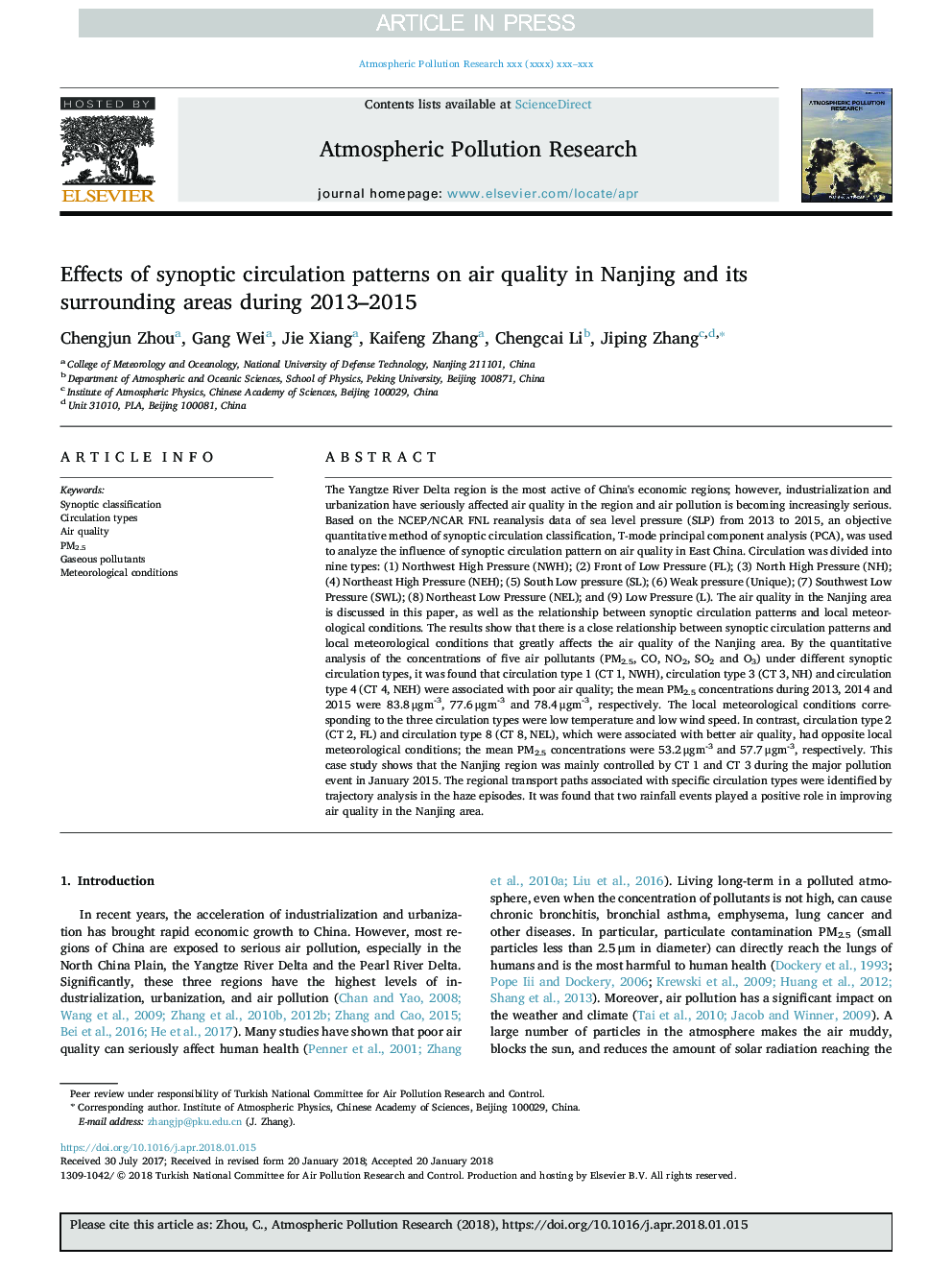| کد مقاله | کد نشریه | سال انتشار | مقاله انگلیسی | نسخه تمام متن |
|---|---|---|---|---|
| 8862618 | 1620114 | 2018 | 12 صفحه PDF | دانلود رایگان |
عنوان انگلیسی مقاله ISI
Effects of synoptic circulation patterns on air quality in Nanjing and its surrounding areas during 2013-2015
ترجمه فارسی عنوان
اثرات الگوهای گردش سینوپتیک بر کیفیت هوا در نانجینگ و مناطق اطراف آن طی سال های 2013-2015
دانلود مقاله + سفارش ترجمه
دانلود مقاله ISI انگلیسی
رایگان برای ایرانیان
کلمات کلیدی
موضوعات مرتبط
مهندسی و علوم پایه
علوم زمین و سیارات
علم هواشناسی
چکیده انگلیسی
The Yangtze River Delta region is the most active of China's economic regions; however, industrialization and urbanization have seriously affected air quality in the region and air pollution is becoming increasingly serious. Based on the NCEP/NCAR FNL reanalysis data of sea level pressure (SLP) from 2013 to 2015, an objective quantitative method of synoptic circulation classification, T-mode principal component analysis (PCA), was used to analyze the influence of synoptic circulation pattern on air quality in East China. Circulation was divided into nine types: (1) Northwest High Pressure (NWH); (2) Front of Low Pressure (FL); (3) North High Pressure (NH); (4) Northeast High Pressure (NEH); (5) South Low pressure (SL); (6) Weak pressure (Unique); (7) Southwest Low Pressure (SWL); (8) Northeast Low Pressure (NEL); and (9) Low Pressure (L). The air quality in the Nanjing area is discussed in this paper, as well as the relationship between synoptic circulation patterns and local meteorological conditions. The results show that there is a close relationship between synoptic circulation patterns and local meteorological conditions that greatly affects the air quality of the Nanjing area. By the quantitative analysis of the concentrations of five air pollutants (PM2.5, CO, NO2, SO2 and O3) under different synoptic circulation types, it was found that circulation type 1 (CT 1, NWH), circulation type 3 (CT 3, NH) and circulation type 4 (CT 4, NEH) were associated with poor air quality; the mean PM2.5 concentrations during 2013, 2014 and 2015 were 83.8â¯Î¼gm-3, 77.6â¯Î¼gm-3 and 78.4â¯Î¼gm-3, respectively. The local meteorological conditions corresponding to the three circulation types were low temperature and low wind speed. In contrast, circulation type 2 (CT 2, FL) and circulation type 8 (CT 8, NEL), which were associated with better air quality, had opposite local meteorological conditions; the mean PM2.5 concentrations were 53.2â¯Î¼gm-3 and 57.7â¯Î¼gm-3, respectively. This case study shows that the Nanjing region was mainly controlled by CT 1 and CT 3 during the major pollution event in January 2015. The regional transport paths associated with specific circulation types were identified by trajectory analysis in the haze episodes. It was found that two rainfall events played a positive role in improving air quality in the Nanjing area.
ناشر
Database: Elsevier - ScienceDirect (ساینس دایرکت)
Journal: Atmospheric Pollution Research - Volume 9, Issue 4, July 2018, Pages 723-734
Journal: Atmospheric Pollution Research - Volume 9, Issue 4, July 2018, Pages 723-734
نویسندگان
Chengjun Zhou, Gang Wei, Jie Xiang, Kaifeng Zhang, Chengcai Li, Jiping Zhang,
